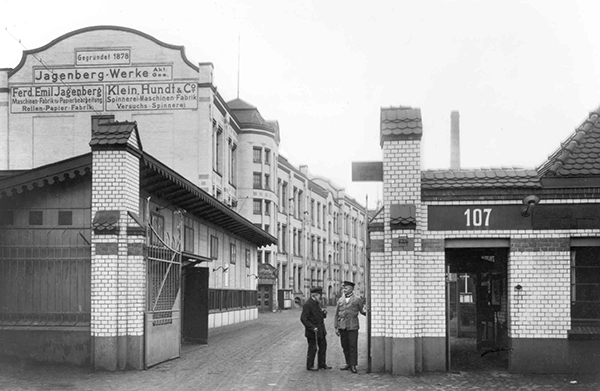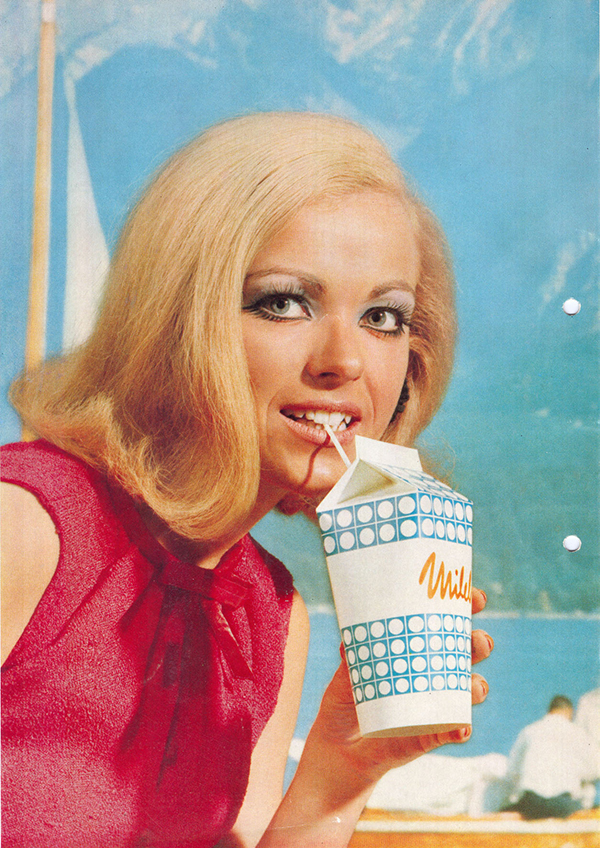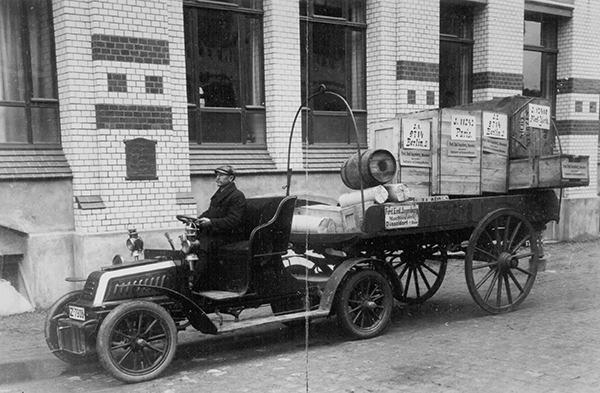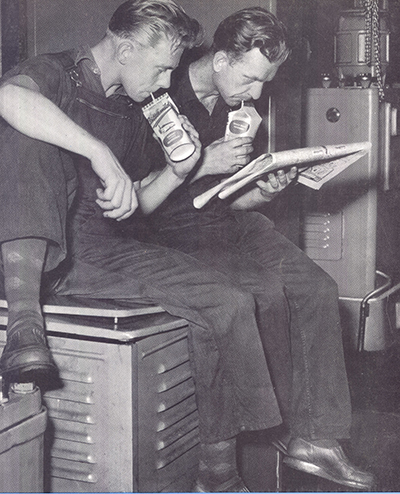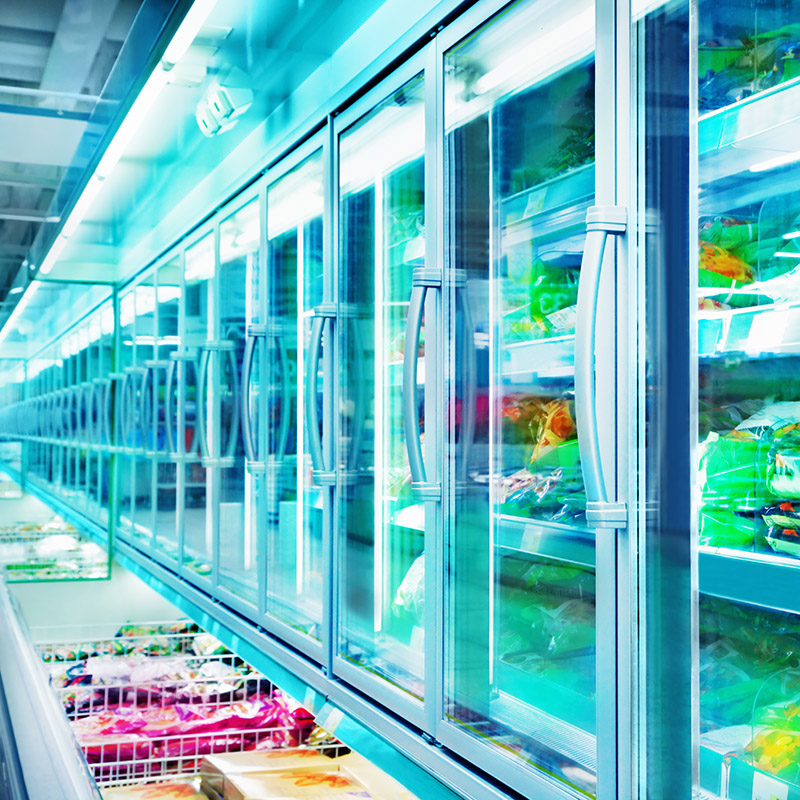In 1878, Ferdinand Emil Jagenberg founded a paper wholesaler in what is now Düsseldorf city center. Demand was high, and with the help of his two sons, Max and Emil, and by purchasing a machine factory, he expanded the business: Jagenberg-Werke became a sought-after name for paper machines.
In the early 20th century, it developed and produced machines for gluing, bottle labelling, folding box gluing, and cardboard packaging, among other things. By the end of the 1920s, 1,350 people were working for the company, which was already internationally renowned and had branched out all over the world.
The invention of the Perga pack
Günter Meyer-Jagenberg, a nephew of Emil Jagenberg, was inspired after a visit to the USA, where a paper milk container had been invented back in the early 20th century. The cartons were dipped in paraffin wax to give them a waterproof coating and were delivered to the large dairies already preformed. There, the milk was poured in, and the carton sealed.
Günter Meyer-Jagenberg recognized the potential – and developed Europe’s first beverage carton. He used the expertise in folding box production existing in his own company and in 1929 registered a patent for a liquid-tight folding box, which he called “Perga”.
One year later, he applied for the “Perga patent”. Perga was the first flexible packaging in Europe and the precursor to today’s globally successful packaging systems from SIG Combibloc. Unlike the packaging in the USA, which was geared towards large dairies, the Perga pack was aimed at the German market and its many smaller bottling companies who could fill the pack with their products without major technical effort.
The Perga pack as a product for the masses
The packaging only became a mass-produced article after the Second World War: beverage cartons began to really take off in the 1950s. They were symbolic of the modern attitude to life prevalent in the German economic boom years. This led to cramped production conditions at the Düsseldorf factory.
The company managers were looking for a new production site and extra workers and found them in Linnich near Aachen. Here, Jagenberg started Papier- und Klebstoffwerke Linnich GmbH (PKL) in 1958. In 1962, the Perga pack changed to enable cheaper transport for the newly emerging supermarkets: it was given a block shape and dimensions adapted exactly to the standard size of the pallets of the time. From now on it was called “Blocpak”. By 1969, 14 billion packs had been produced and sold.
In 1975, the pack underwent another important change: aseptic filling. It was now possible to pack other foods and beverages in cartons. The new name? combibloc. Jagenberg-Werke was gradually taken over by Rheinmetall Maschinenbau AG in the 1980s and the individual divisions sold off again in the 1990s. The Düsseldorf factory stood empty in 1985. Production relocated to Neuss.
Today
The beverage packaging division has belonged to the Swiss SIG Group in Neuhausen since 1989. Successors to the Perga pack are produced at the Linnich plant. The packaging has long been available in a wide variety of formats and in various reduced-CO2 packaging materials.
There is also a new Jagenberg AG based in Krefeld, which specializes in mechanical engineering and technical textiles.
Der Salzmannbau
When production at Jagenberg-Werke expanded rapidly in the early 20th century, the family went in search of a suitable new production site. The site between Himmelgeisterstrasse, Merowingerstrasse, and Uhlenbergstrasse seemed perfectly suited.
Jagenberg commissioned Düsseldorf architects Salzmann & Ganzlin. The new factory was inaugurated with a grand opening ceremony in 1906 and was very modern for the time. There were changing rooms, dining halls, a tavern, a purchasing cooperative, and swimming baths. Care was taken in the planning to ensure that the rooms were bright and pleasant. After Jagenberg-Werke moved out in the mid-1980s, the site was acquired by the city of Düsseldorf and converted.
Today it is an industrial monument with apartments, artists’ studios, and the event center “Jazzschmiede”.
(Header image, “Advertisement” and “Workers on a break”: SIG Combibloc Systems GmbH, “Factory entrance” and “Semitrailer": Jagenberg AG)

